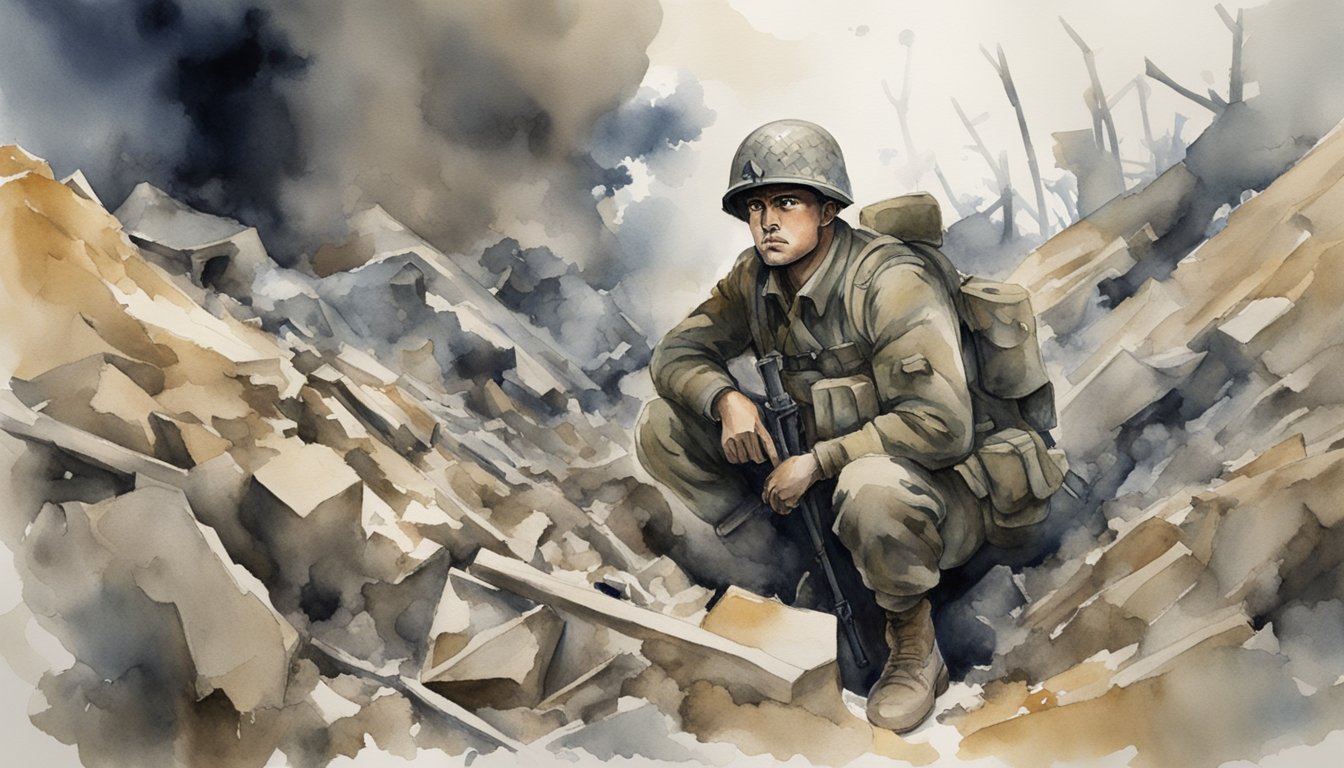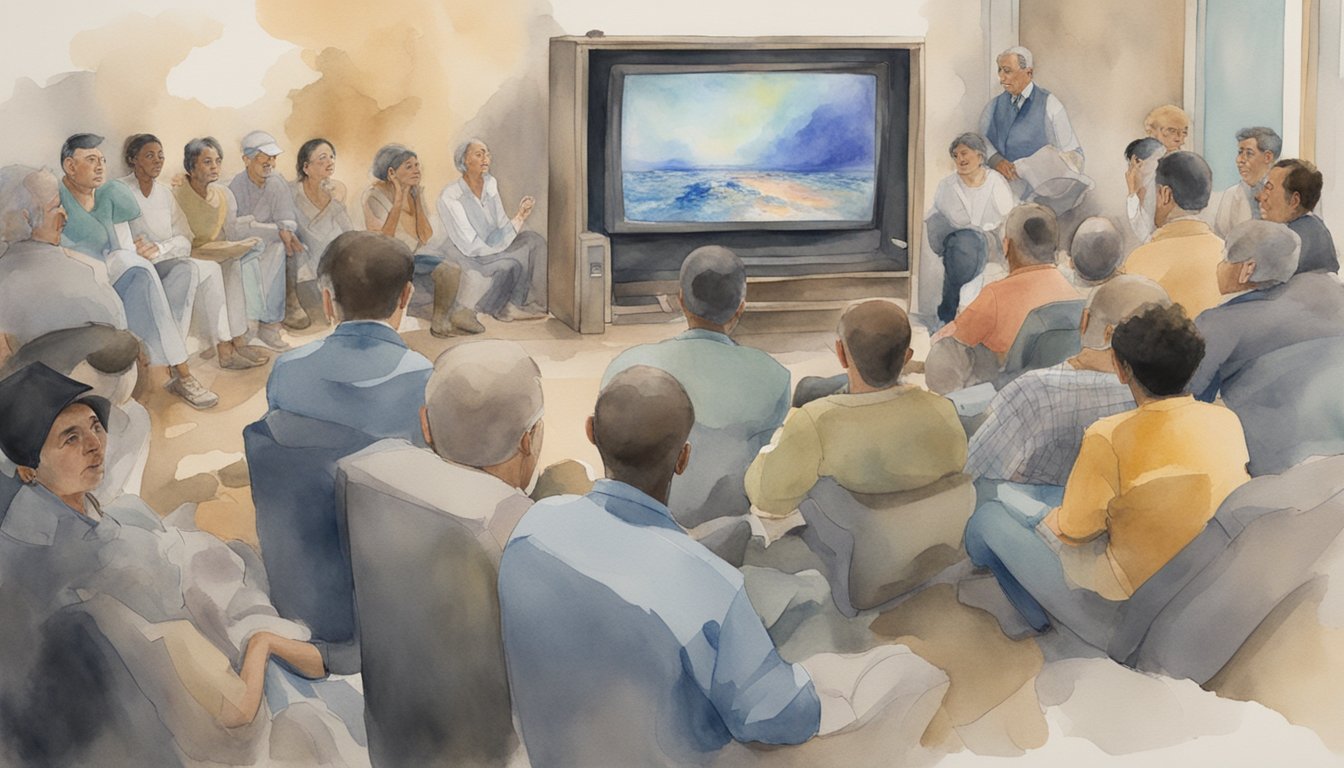Origins and History of Shell Shock
Shell shock emerged during World War I as a perplexing condition affecting soldiers. It intertwined the fields of psychiatry and warfare, presenting new challenges in understanding the psychological impact of combat.
Shell Shock in World War I
Initially observed among soldiers in the British Army, shell shock was a term coined to describe a range of psychological symptoms resulting from the intense bombardment and the horrors experienced during World War I. Medical officers noted a variety of symptoms from tremors and tics to nightmares and anxiety, often occurring after soldiers had been exposed to exploding shells and the stresses of trench warfare. It was a controversial diagnosis at the time, caught between perceptions of psychological weakness and the very real effects of traumatic experiences in war.
Evolution into Modern Understanding
Over time, the understanding of shell shock has evolved significantly. What used to be seen as a condition specific to the trauma of artillery warfare has now broadened into a more comprehensive recognition of combat-related psychological trauma. Shell shock laid the groundwork for later concepts such as “war neurosis” and “combat stress reaction,” and eventually, it was reconceptualized with a name we’re more familiar with today: post-traumatic stress disorder (PTSD). PTSD is now understood to result from a variety of traumatic experiences, both in and out of military contexts, and it’s acknowledgment has transformed approaches in both psychiatry and the support provided to veterans.
Medical and Psychological Aspects

Shell shock, a term coined during World War I, highlights the psychological impact of war on soldiers. With its complex blend of medical symptoms, this condition has posed significant challenges for diagnosis and treatment.
Symptoms and Diagnosis
Soldiers experiencing shell shock often display a range of psychological and physical symptoms. These include severe anxiety, inability to sleep, sudden memory loss, and extreme stress. Diagnosis in the early 20th century was primitive by today’s standards, often conflating shell shock with other conditions like neurasthenia. Freud’s research into psychoanalysis also played a part in shaping this understanding. Accurate diagnosis is essential as some veterans face nightmares and panic attacks, resembling a fear response similar to a flight reaction.
Treatment and Therapy
Initial treatments for shell shock varied, from the restorative, such as talk therapy, to more drastic measures like electrotherapy. Today, therapy focuses on addressing symptoms like anxiety and stress through a combination of counseling and medication. Hospitals often use tailored treatment plans for war veterans to help manage the profound impact on memory and sleep patterns. Ongoing research continues to improve therapy methods, offering hope and support to affected veterans.
-
For a history of how shell shock has impacted psychological medicine in Britain, the article Shell-shock and psychological medicine in First World War Britain offers detailed insights.
-
An understanding of psychological models used in the UK can be found in Shell shock at Maghull and the Maudsley: models of psychological medicine in the UK.
-
The evolution of psychotraumatology, from shell shock to the modern concept of PTSD, is further explored in an article titled From shell shock and war neurosis to posttraumatic stress disorder: a history of psychotraumatology.
Cultural Impact and Media Representation

Shell shock not only left its mark on the individuals and families affected by war but also deeply influenced cultural expressions and public perception through literature and film, which in turn raised education and awareness about the psychological trauma of war.
Literature and Film
In the vast landscape of literary works and films, shell shock has been a poignant subject reflecting the trauma and turmoil of war. The condition, once whispered about with uncertainty and often stigmatized, found its way into the public eye through compelling narratives and character studies. Consider the heart-wrenching portrayals in novels or the stark, visual dramatizations in films about the First World War, which bring the struggles of soldiers and officers to life, casting light on the invisible wounds of combat. Such depictions detail not only the personal battles with stress and damaged nerves but also explore the broader societal implications of returning military duty personnel trying to reintegrate into a world that can’t fully grasp their experiences.
Education and Awareness
Media portrayals have played a key role in promoting understanding and education about the psychological impacts of war, such as shell shock. By representing the raw emotional states of anger and confusion experienced after natural disasters or intense military conflicts, these cultural artifacts have encouraged a more nuanced conversation about mental health. Furthermore, in historical accounts of World War One, shell shock has transcended its medical diagnosis to become a symbol of the war’s deep and lingering impact on the human psyche, amplifying awareness about the importance of psychological care in the aftermath of war and conflict.

